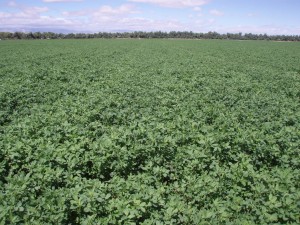Alfalfa Growers Save Water and More with Subsurface Drip Irrigation
 Alfalfa growers may be encouraged to take a fresh look at subsurface drip irrigation (SDI) based on promising work underway at the Burford Ranch in Five Points, Calif.
Alfalfa growers may be encouraged to take a fresh look at subsurface drip irrigation (SDI) based on promising work underway at the Burford Ranch in Five Points, Calif.
Francisco Parra, an agronomist and pest control advisor at Burford Ranch, presented preliminary information at an alfalfa pest and crop management meeting held in Dos Palos, Calif. in June on switching the ranch’s Roundup Ready alfalfa acreage to SDI on 60-inch beds to maximize water efficiency.
Alfalfa Growers Save Water and More with Subsurface Drip Irrigation Read More »
